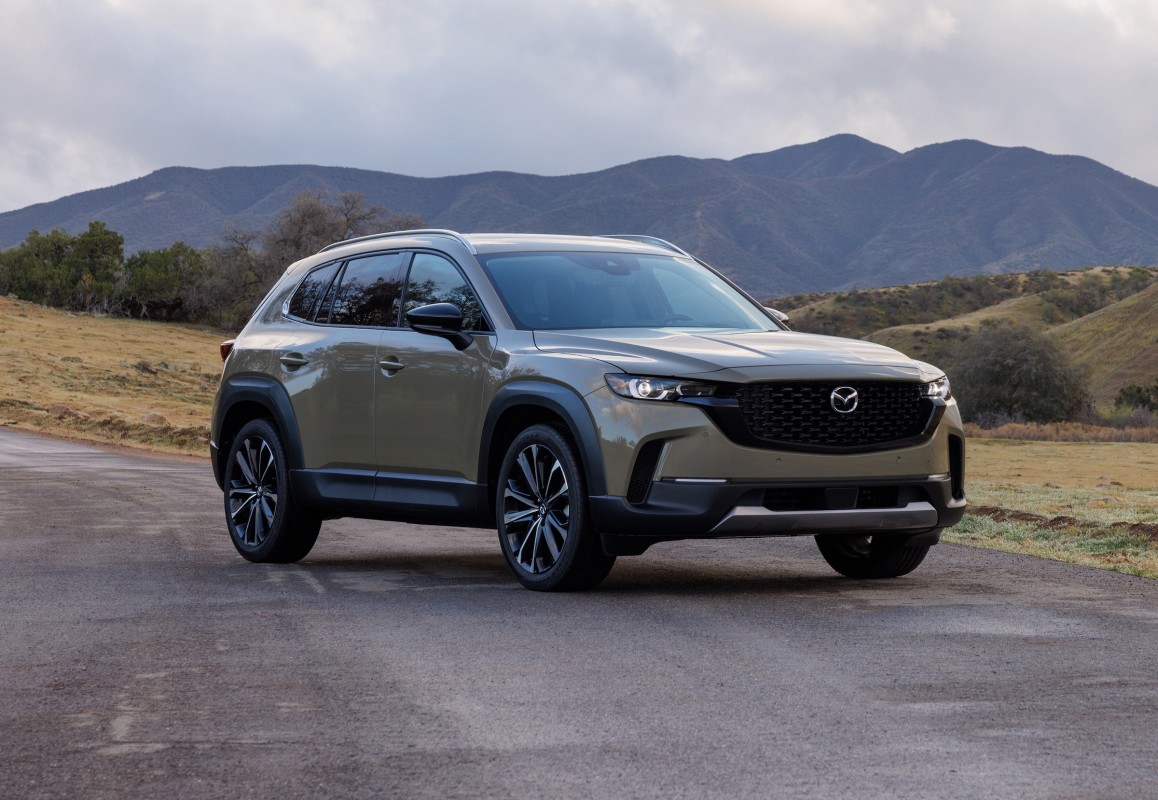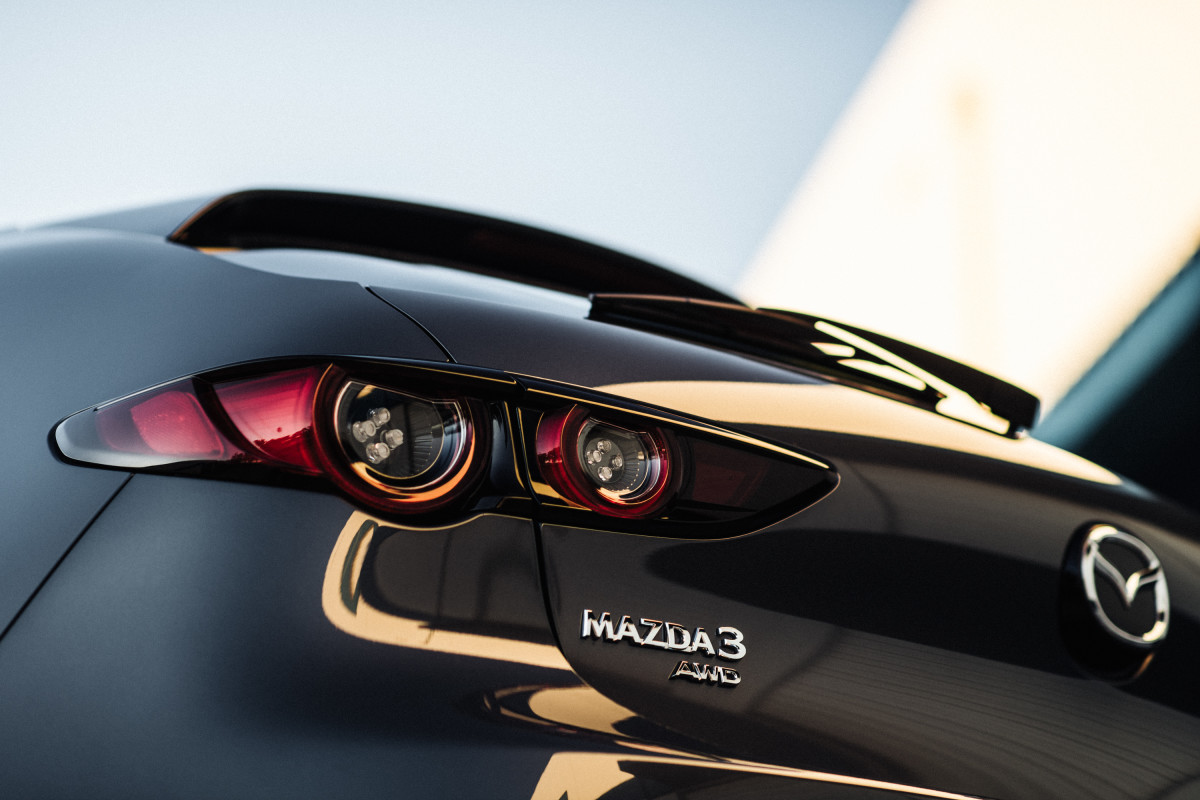Japanese automaker Mazda is withholding its earnings forecast for its current fiscal year
According to Automotive News, Mazda CEO Masahiro Moro stated during a May 12 presentation on the fiscal year ending March 31 that the automaker requires more time to assess how tariffs might affect its operations.
“We will work toward maintaining global sales volume at levels close to the previous year to the greatest extent possible,” Moro said. “Regarding the outlook for the current fiscal year, considering the uncertain business environment, including U.S. tariff policies, we are not yet in a position to provide a forecast.”

Mazda
Mazda plans to offset tariffs and U.S. sales impact by focusing on other key markets
Sales in North America, Mazda’s biggest market, jumped by a substantial 24 percent to a record 617,000 vehicles during the fiscal year that ended on March 31, driven by all-time-high deliveries in both Mexico and the U.S.
In 2024, Mazda’s U.S. sales grew by 17% to a record 424,382 vehicles, the best sales year for the brand since 1986. As recently as February, Mazda executives predicted that it would have another year of record U.S. sales, leaning on the success of a redesigned CX-5 to help it move 450,000 vehicles in 2025. However, Mazda CFO Jeffrey Guyton now predicts that U.S. demand will fall due to tariff-induced price increases. Mazda’s CEO claimed that tariffs cost the company ¥9 billion to ¥10 billion (~$60.1 million to $66.8 million) in April alone, however, the company intends to combat by pushing Mazdas in other key regions like its native Japan, Southeast Asia, and China, as well as aggressive cost-cutting.
“We can imagine there will be some risk to our U.S. sales in the coming year,” Guyton said. “And our intention is to find sales opportunities among all the other countries.”
View this post on Instagram
Mazda imports a lot of cars
One caveat behind the numbers is that Mazda heavily relies on vehicle imports on a larger scale than contemporaries like Toyota, Honda, and even Nissan. In 2024, Mazda imported 235,738 vehicles from Japan to the U.S., including models like the CX-5 crossover and the CX-70 and CX-90 SUVs, which make up roughly 55% of its U.S. sales. In addition, Mazda also imports the compact Mazda3 and the CX-30 crossover from its plant in Mexico, which are compliant with the United States-Mexico-Canada Agreement.
Mazda Toyota Manufacturing, U.S.A., the automaker’s only stateside factory, is a jointly operated site in Alabama where Mazda makes the CX-50 and Toyota makes the Corolla Cross on different assembly lines. Although the CX-50 is made there, Guyton says it will have to pay tariffs on imported parts used in its assembly, which will range from $2,000 to $4,000 per vehicle.
More low-priced cars, fewer incentives
Mazda CFO Guyton noted that the automaker will try to push more vehicles that move quicker from dealership lots instead of costlier vehicles that have higher margins.
“In service of keeping production maximized, we need to make sure that we’re focused on fast-turn product,” Guyton said. “That doesn’t mean purely entry grade. But higher value and more core models are what we’re looking at.”
In addition, Mazda will try to curb its incentive spending as car prices increase. Over its past fiscal year, Mazda says that incentives took away over 124.9 billion yen (about $833.9 million) from its operating profits. According to data from Motor Intelligence, Mazda’s incentives averaged $3,224 per vehicle from January-March 2025, a 36% year-over-year increase.

Mazda
Overall, Mazda saw a 26% dip in operating profit and a decline in its operating margin from 5.2% the year before to 3.7%. Mazda CEO Moro said that the company expects to give an earnings outlook when it announces its fiscal first-quarter results, which typically happen in August. However, as political leaders from Tokyo and Washington, D.C. negotiate some amendments to the tariffs, Moro maintains that clear guidance won’t come unless something gets ironed out between the respective trade representatives.
“At the moment, the Japanese government is still negotiating with the U.S. government. So, I don’t think we should provide guidance based on an uncertain outlook or an uncertain premise,” Moro said. “As the situation is highly volatile, we cannot come up with an estimate at this moment in a rational manner, and so our guidance is undecided.”
Final thoughts
Mazda’s withdrawal of its outlook guidance is the latest in a line that includes big names like its former Dearborn parent, Ford, and German luxury automaker Mercedes-Benz. Though Moro stated that it’s unable to get clear guidance until the U.S. and Japan work out a trade deal, such a deal is unlikely to come very quickly.
According to a May 11 Bloomberg report, Japanese Prime Minister Shigeru Ishiba will not accept any trade deal that excludes an accord on auto imports. Japanese media outlet NHK also reported that the Japanese government proposed expanding auto-related investment in the US as part of its concessions. However, they predict that any agreement will likely be reached in early July, around the time Japan announces a national election.